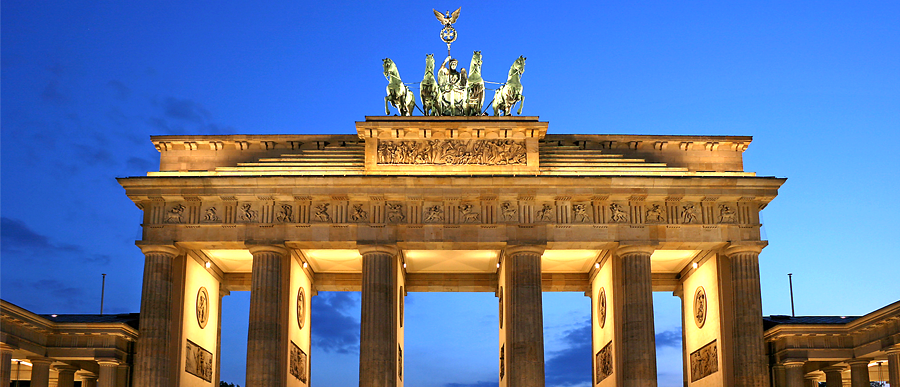
The Brandenburg Gate in Berlin has throughout the decades born witness to Germany’s tumultuous past, most significantly in recent history standing divisively between East and West Germany during the Cold War as part of the impenetrable Berlin Wall. Yet this site, at one time representing such negativity, has come to stand as a national symbol for unity and peace.
Commissioned by Friedrich Wilhelm Langhans in 1791, the Gate is a grand entrance to the boulevard “Unter den Linden” leading to the palace of the Prussian monarchs. It was inspired by the Acropolis in Athens, featuring a sculpture of the Quadriga (a four-horsed chariot bearing Victoria, goddess of victory). During the Napoleonic Wars, this figurehead was taken to Paris following a defeat of Prussia by the French troops in 1806, till the French were defeated and it was reclaimed in 1814.
The march of the Nazi troops through the gate to celebrate Hitler’s rise to power in 1933 brought the world’s attention to this monument. Although the gate was significantly damaged in World War II, it survived, only to become the scene of further torment during the Cold War; its closure in 1961 prevented East Berlin from travelling to the West, till peaceful revolution tore down the Berlin Wall in 1989. The Gate was the setting of the official ceremony to mark the reunification of East and West Germany in 1990.
Today the refurbished neoclassical triumphal arch stands as one of the most popular sites to visit in Germany. Lego certainly agree – you can buy a kit to build your own miniature version.
Find out more about travelling Germany in the Europe 2014 iGap Travel Guide!
Great travel articles as well as deals, all sent directly to your inbox. Sign up today!
